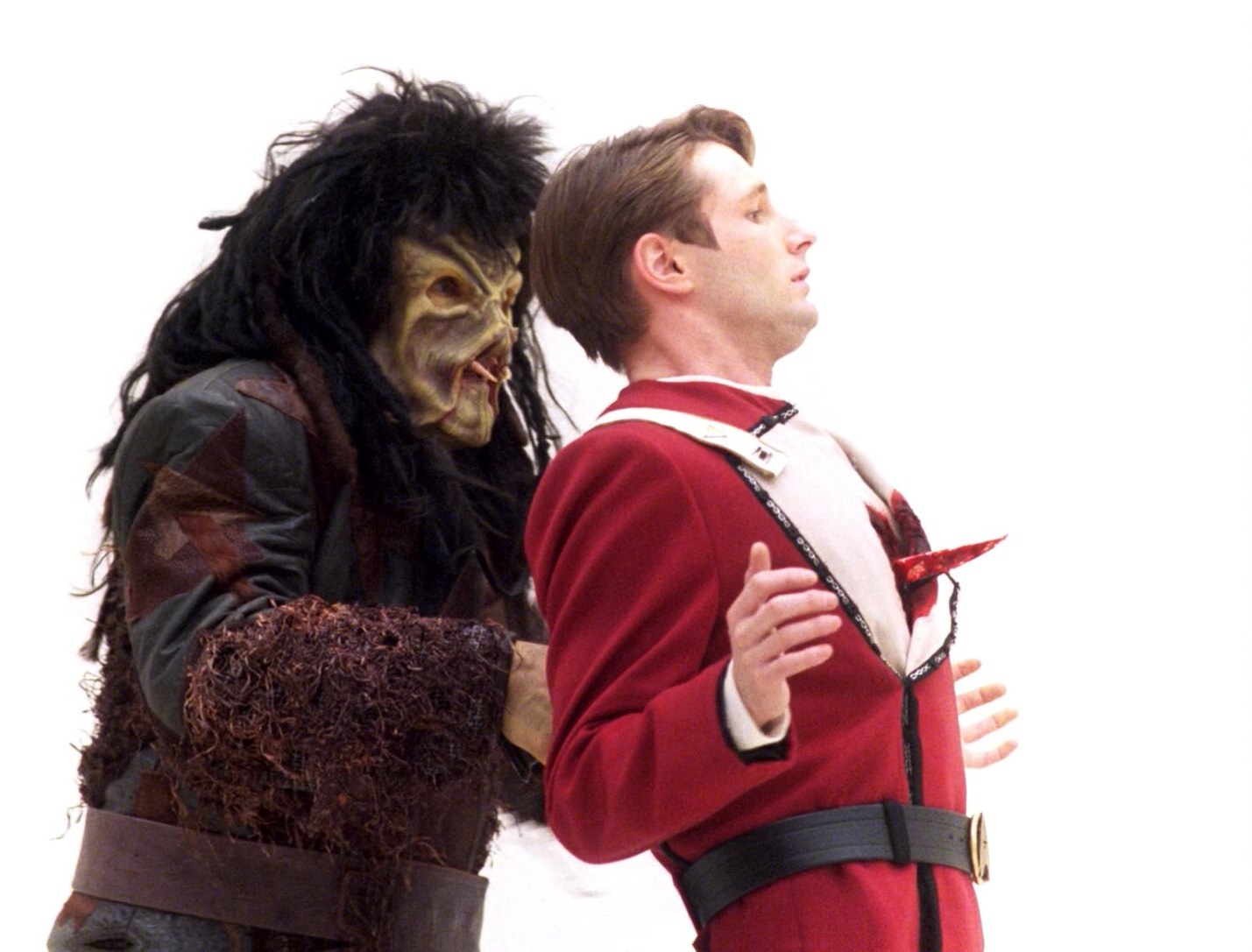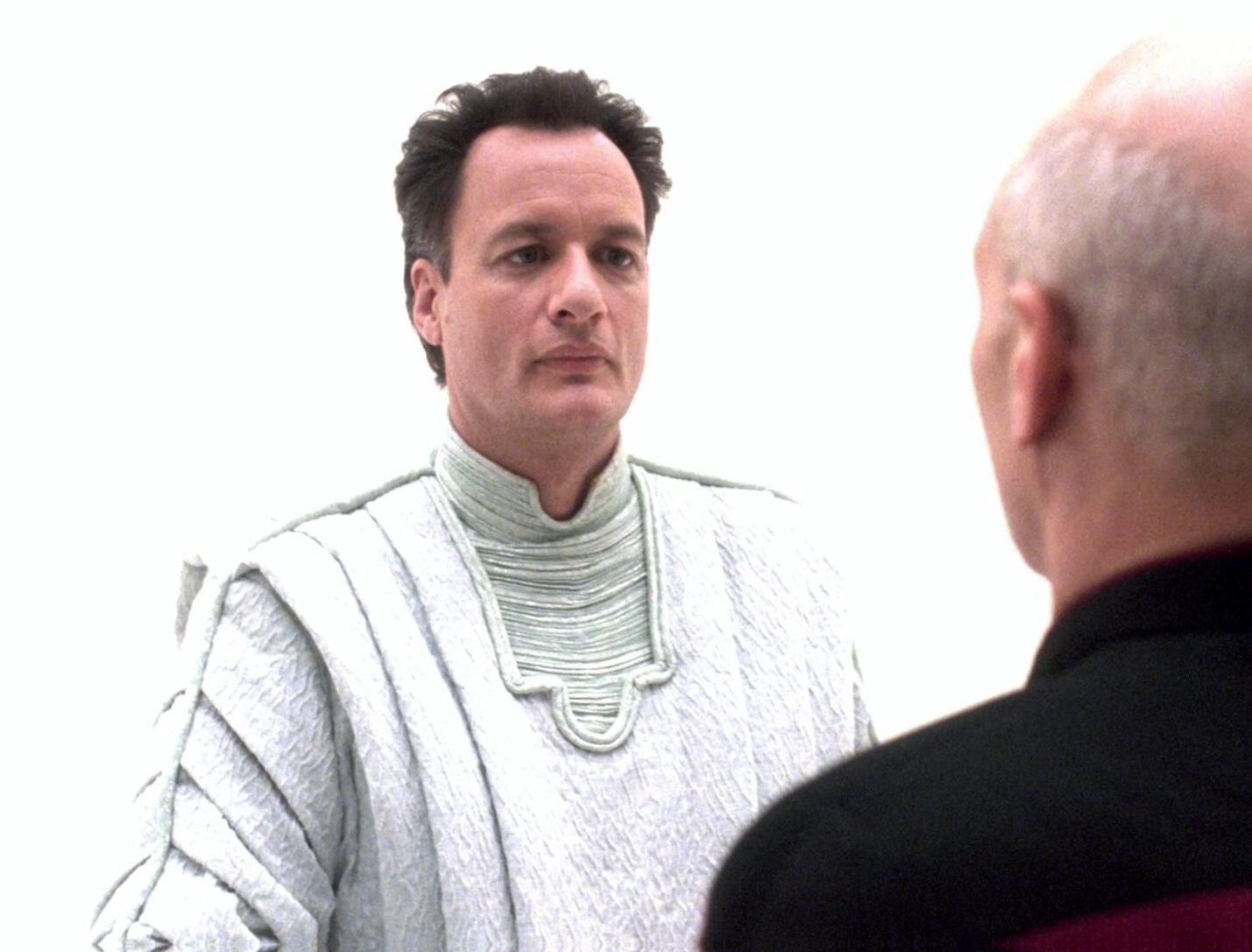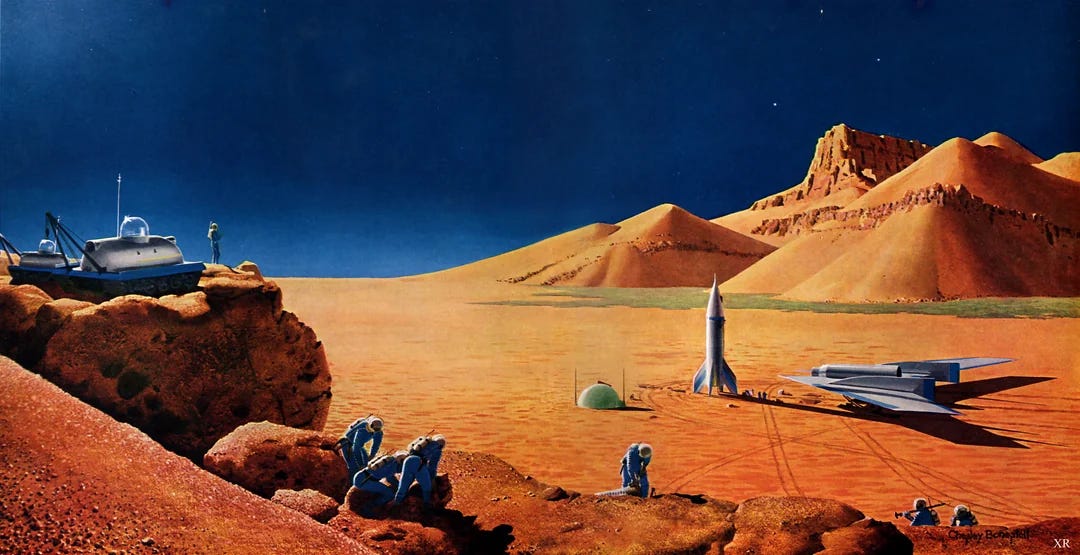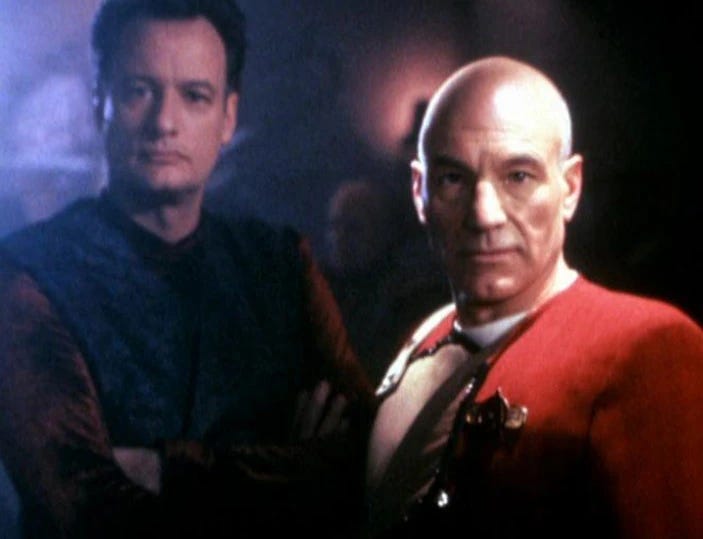We open on the sick bay: is this a Dr Crusher episode? Wait… Who’s that laid out in the sickbay - why, it's Captain Picard... and he’s dead! He finds himself in a blank white space where Q promptly tells him the bad news. What follows is a romp through the good captain’s timeline as he tries to avoid having to get his artificial heart. Will the captain be saved from death by Q’s interference? Well, obviously. But along the way we’re going to have quite the morality tale.
Words
“Welcome to the afterlife Jean Luc. You’re dead.”
How’s that for a Mindwarp teaser! Writer Ronald D. Moore pitched this originally as “A Q Carol”, and it entailed Q taking Picard through a series of ‘mistakes’ in his life, just like Ebenezer Scrooge in Charles Dickens’ A Christmas Carol (whom Patrick Stewart would go on to play in a TNT TV movie six years later). The story included the stabbing, an event in his childhood in France, and Jack Crusher’s death on the USS Stargazer. Michael Piller was not pleased:
He thought it was pointless. Here are some scenes from your life basically. It didn’t have the right resonance so I went back and tried to focus in on one incident to make it a little more meaningful.
Obviously, he chose the stabbing:
It was an interesting little story about him. That story, to me, said a lot about Picard’s character – that he was a different guy in those days. Then he changed. Why did he change? What would be the difference in the young womanizing, hard-drinking, hard-fighting Jean-Luc Picard and the guy that we know today?
However, the story concept did not originate with Moore. Apparently, there was a pitch concerning a ‘near-death white light’ concept, but the staff promptly forgot about it. Only after the episode aired did they receive a letter from James Mooring, who had originally pitched the idea. The production staff immediately recognised their mistake. They apologized profusely and promptly paid him. Very honourable - the Klingons would be proud!
There was a lot of material that ended up on the cutting room floor or that never escaped the screenplay. There was a much longer scene between Marta and Picard that was cut, and Moore had also intended a scene where the future Enterprise captain would have been Jellico from “Chain of Command”. There was also a scene where LaForge (who does not appear on screen in the episode we see) chews out Lieutenant Picard in a manner parallel to Lieutenant Barclay in “Hollow Pursuits”. All in all, none of these things were essential to the story, which greatly benefits from having been tightened up.
The Bonestell Recreation Facility (where “Human play Dom-Jot”) was named after artist and matte painter Chelsey Bonestell, whose paintings were an inspiration to the US space program, causing him to be dubbed “the Father of Modern Space Art”. You have undoubtedly seen pictures by Bonestell like this one before...
Bonestell’s artworks are extremely iconic, and it’s very cool that Moore worked his name into this script. Certainly more impressive that naming the character Penny Muroc after an older woman Moore had once dated!
Obviously this episode builds on the anecdote from “Samaritan Snare” that Picard tells to Wesley Crusher. Moore tweaked the details slightly, but then who doesn’t end up altering the story of their life in the retelling...? It’s also evidently a format-breaker - there’s no stardate (one of only five TNG episodes without one), it’s a Q episode but his name isn’t in the title, and Picard not only gets laid but we see him in bed afterwards. And let’s have a quick shout out to all the call-backs that Moore squeaks into the teaser - Dr Sela gets a nod, as does the classic Trek drug cordrazine.
That’s just the tip of the iceberg when it comes to format-breaking. Remember in “Face of the Enemy” that they were considering doing it Quantum Leap style, but didn’t want to step on that show’s toes? Apparently, this reserve lasted all of one week, as here we are in the next episode having grown-up Picard playing young Picard, exactly in the Quantum Leap style. Not that I’m complaining - it’s obviously the way this episode had to be filmed. But it’s funny that they held back from doing it last week, and then went on and did it anyway one week later!
This is one of my favourite episodes, and it’s one of John de Lancie’s too:
I thought it was a terrific script…There was a speech at the end where I talk about what he would have been, which I thought was a tip-top speech. I just thought that show from beginning to end was terrific.
Yet - incredibly - Michael Piller was less impressed.
I wasn’t much a fan of that show. I thought it was a wonderful premise, I loved the pitch of Picard dying and having the white light experience and reaching out to the hand and it’s Q. It’s your worst nightmare come true. I found that from the beginning my greatest fear was that it would be It’s a Wonderful Life. When a series gets tired, they do It’s a Wonderful Life. I don’t think we ever solved my problems with it in terms of getting a fresh slant.
Moore, on the other hand considered it “one of the best things I wrote and one of TNG’s finest episodes”, and I have to agree. But there was some pushback from fans who misinterpreted the message of the episode. As René Echevarria later observed:
People felt it glorified violence and that it basically says Picard tries to go back and not do the violent thing and solve things by reason and it makes him bland and not captain material. We got big, big letters from people saying this is awful and goes against everything Star Trek stands for. I think the point the show made was more subtle than that, and I think they lost sight of it.
It is indeed a subtle idea animating this story... but it’s also an extremely important one.
Acting Roles
This is yet another episode where the brilliant chemistry between John de Lancie’s Q and Patrick Stewart’s Picard is the absolute spellbinding core of everything. Some days, it’s my favourite Q episode... but others “Deja Q” is just too good to beat.
Another important part of the cast are Picard’s academy friends, J.C. Brandy as Marta Batanides (left) and Ned Vaughn as Cortan Zweller (right),
If the chemistry is somewhat lacking here between Brandy and Stewart, it’s not that her performance is bad, it’s just weird because of the huge age difference the audience sees. Two years after this role, she played Jamie Lloyd in Halloween: The Curse of Michael Myers, which is the only thing you're likely to have seen her in unless you watch US daytime soap Days of Our Lives, in which she played Marguerite for eight episodes in the early 2000s.
Ned Vaughn acquits himself rather well as the hot-headed Zweller. Not his only time in uniform, either! He was a seaman on the USS Dallas in The Hunt for Red October three years before this, and a CAPCOM officer in Apollo 13 two years later, as well as playing a lieutenant in Courage Under Fire the year after that.
Marcus Nash who plays ‘Young Picard’ only had four acting roles (and notice he gets no speaking lines here), but went on to have a career as a writer, although his only full-length film was the obscure 2012 movie Terror at Lost Lake.
Finally, a shout out to Clive Church playing Picard’s dad, Maurice.
He’s a total mystery! It’s his only screen role, and nobody seems to know anything about him.
Models, Make-up, and Mattes
Director of photography Jonathan West and producer Merri Howard had no end of problems concerning the ‘afterlife’ sequences. John de Lancie is shot in a white robe against a white background - done without care, this would have resulted in a weird floating head! They instructed de Lancie to make only slow and careful movements to avoid the problem, which Moore actually felt worked rather well with the context of the story.
Let’s welcome back the Selay and the Anticans, appearing for their first and only time since “Lonely Among Us”. Apparently, their later hostilities did not exist at this time since they were happy to hang out in a bar and watch some Dom-Jot!
This is probably the only space bar in TNG not to feature a Ferengi - a situation ubernerd of Trek lore Moore precluded in his lovely description of this location in the screenplay:
The bar is a dilapidated, run-down, hole in the wall with mismatched furnishings, dirty walls, and indifferent service. The clientele consists mostly of passed-out bodies and disreputable figures conducting illegal deals in the shadows. In short, it is exactly the kind of place to attract young Starfleet officers fresh from the Academy and looking for a little adventure. (NOTE: No Ferengi should be seen in this episode. They had not been “discovered” during this time period.)
We do however get the Nausicaans, which look rather like the Chalnoth from “Allegiance”, but with fancier mandibles.
Lastly, a matte painting is used to represent Starbase Earhart.
This one made me chuckle, as it was created for the City of Domes in the 1976 sci-fi movie Logan’s Run, as can clearly be seen from the stills above.
My family was underwhelmed by this one, but this is not only one of my favourite episodes, it also had a profound metaphysical effect on me. After watching it, I could no longer engage in ‘what if’ scenarios about my past, because I became acutely aware of how little it would take to unravel the tapestry of my own life. A great chunk of Picard backstory, a dashing dollop of Q, and a metaphysical morality play? It’s another of season six's outstanding Mindwarp episodes.















